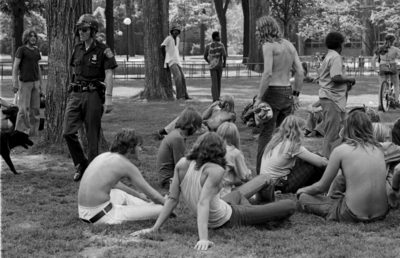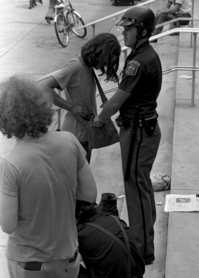Editor's note: Robert Faber writes occasional columns for AnnArbor.com about aging, politics and other issues.
In 1969, for the first time in 30 years and in keeping with the nation’s highly-charged atmosphere of radicalism accompanying the Vietnam War, Ann Arbor elected a liberal mayor (Bob Harris) and a Democratic majority to City Council.
The town, like university communities throughout the country, was struggling through a tumultuous period of rebellion — its youth aggressively seeking new directions, demanding new approaches, voicing new objections to some of the routines that had long been accepted behavior.
The primary focus, of course, was the war in Vietnam, but an increasingly turbulent issue was the illegal possession and use of marijuana. “Reefer Madness” had by then grown from a movie classic to a community commonplace, with Ann Arbor’s population divided into passionate partisans on both sides of the issue. What the older generation saw as a fruit of the Devil was accepted by the young as a harmless indulgence, not much removed from a glass of wine before dinner.

1973 Hash Bash.
FILE PHOTO
Some of us were less concerned about the harmful consequences of the product itself than with the damage accruing to its classification as a felony, concerned that by legally and socially equating it with heroin and cocaine, for example, we were dangerously dimming the distinctions between them.
We were fearful, too, that the criminalization of such a minor infringement of the law might have a seriously negative impact on the lives of those youngsters as they grew into adulthood. So in March, 1971, we proposed a new legal status for marijuana, making its use or possession a minor misdemeanor.
The city election a month earlier had brought to the Council two members of the Human Rights Party, a radical group of activist young rebels whose votes were necessary for passage of the Marijuana Ordinance. The proposal called for a penalty of $9, the lowest fine for criminal behavior currently on the city’s books, so presumably the least provocative. The HRP, however, had a different agenda and insisted on a fine of 25 cents.
We finally compromised at $5, where it remained until 1990, when the fine for the first offense was raised to $25.
The town, not surprisingly, was split between the more conservative, older population and the general University of Michigan-oriented community of teachers, students and friends.
The night of the council debate and final vote was tumultuous. The council chamber was packed with raucous community members from both sides of the issue, but given the political makeup of the council, the vote was predictably positive. The community reaction, however, was not.
Although the younger and university-connected members of the audience were pleased, the townspeople in attendance were furious and the yelling was long and loud. One member of the audience, for example, a very pleasant and friendly neighbor of mine, was so shaken by the passage of the ordinance that she ran up to me after the vote, crying bitterly and through her tears yelled, “Bob, you have ruined our city.”
(A very sad sidebar to this story was that not long afterward she was diagnosed with a fatal form of cancer, leaving her in constant pain. I never knew the details, but I do recall that one of her daughters regularly made pans of cookies for her — laced with marijuana to help relieve that pain. My neighbor not only welcomed the gift, but learned to rely on it as her only effective source of relief. After about a year or so she did die from the cancer, but I recall her gratitude for the comfort meanwhile granted by her daughter’s cookies.)

FILE PHOTO
And despite the size and enthusiasm of the crowd over the years, I am unaware of any seriously negative incidents.
In 1976, for example, an estimated 6,000 celebrants attended — smoking, singing, partying — but with no attendant violence. And once in 1984 the police showed up to quiet a particularly loud and unruly crowd, but again there was no trouble beyond the noise.
It is now four decades later. The Hash Bash crowds are small, the enthusiasm muted and the violence still absent. Meanwhile, use and possession of marijuana remains a crime (although socially and legally only a minor one), while its use as a legal and acceptable medical treatment seems to be expanding, albeit slowly. There are now 16 states in which the use of marijuana as a source of pain relief has been accepted by each state’s government and its medical community, although the federal government has yet to take a position on the issue.
And yes, the times they are a’changin’ — for both Bob Dylan and Mary Jane.
Bob Faber has been a resident of Ann Arbor since 1954. He and his wife, Eunice, owned a fabric store and later a travel agency. He served a couple of terms on the Ann Arbor City Council. He may be reached at rgfaber@comcast.net.